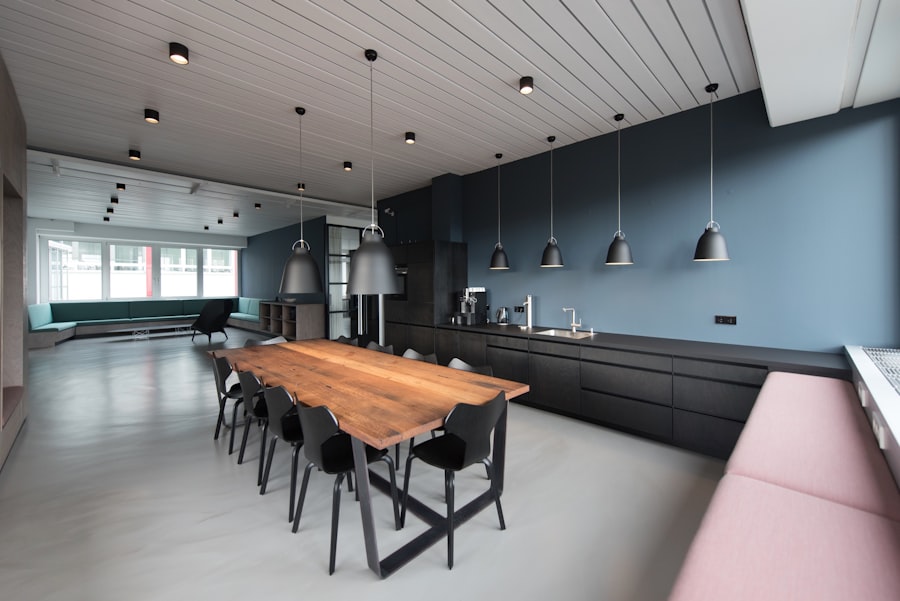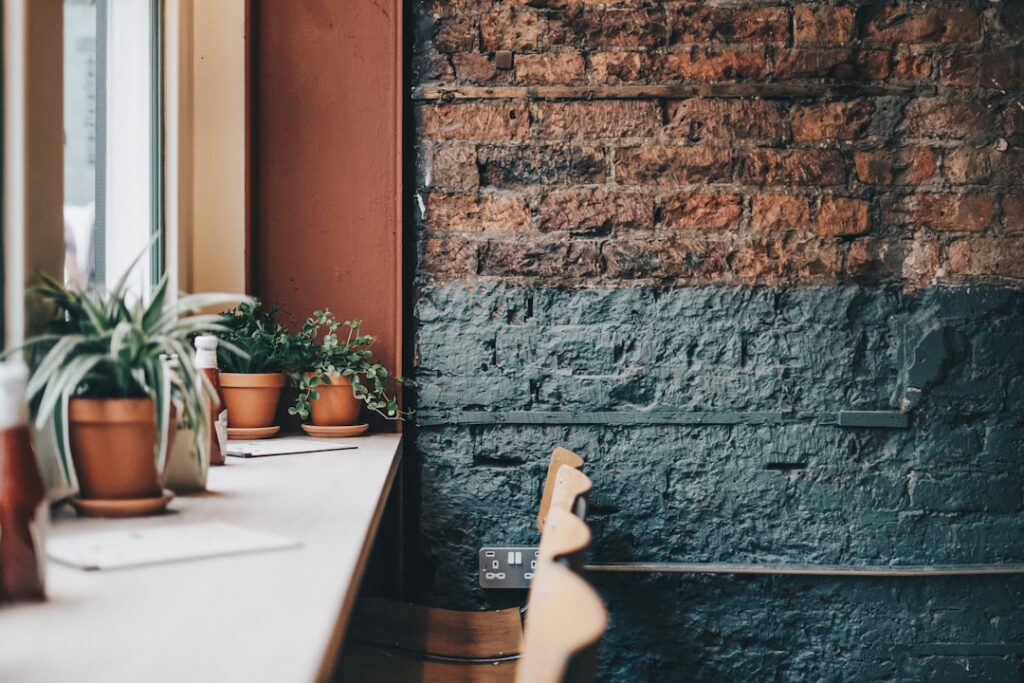In the modern workplace, the significance of stylish meeting room furniture cannot be overstated. A well-furnished meeting room serves as a reflection of a company’s culture and values, projecting professionalism and attention to detail. When clients and employees enter a meeting space adorned with aesthetically pleasing furniture, it creates an immediate impression of competence and creativity.
This initial perception can set the tone for discussions, negotiations, and collaborations, making it essential for businesses to invest in furniture that not only looks good but also enhances the overall atmosphere of the room. Stylish furniture can inspire creativity and foster a sense of comfort, encouraging participants to engage more openly and productively during meetings. Moreover, the right furniture can significantly impact the functionality of a meeting room.
Ergonomically designed chairs and tables can enhance comfort, allowing participants to focus on the agenda rather than their physical discomfort. A well-thought-out layout can facilitate better communication and collaboration among team members, promoting a more dynamic exchange of ideas. In an era where remote work is becoming increasingly prevalent, having a stylish and functional meeting room can also serve as a powerful tool for attracting talent and retaining employees.
It signals that the organization values its workforce and is committed to providing an environment conducive to productivity and innovation.
Key Takeaways
- Stylish meeting room furniture can enhance the overall look and feel of your office space, leaving a positive impression on clients and employees.
- When choosing meeting room furniture, consider the size of the room, the type of meetings held, and the overall aesthetic of the office.
- Design options for stylish meeting room furniture include modern, traditional, and minimalist styles, allowing you to customize the look to fit your office’s aesthetic.
- Incorporating technology into meeting room furniture can improve productivity and efficiency during meetings, with options such as integrated power outlets and cable management systems.
- To create a functional and stylish meeting room, consider factors such as seating capacity, lighting, and the arrangement of furniture to optimize the space for collaboration and productivity.
Choosing the Right Meeting Room Furniture for Your Office
Selecting the appropriate meeting room furniture involves a careful consideration of various factors that align with the specific needs of your office environment. First and foremost, it is crucial to assess the size and layout of the meeting space. A large conference room may require expansive tables and ample seating to accommodate larger groups, while a smaller huddle room might benefit from modular furniture that can be easily rearranged for different purposes.
Additionally, understanding the primary functions of the meeting room—whether it is for formal presentations, brainstorming sessions, or casual discussions—will guide your choices in terms of style, size, and configuration. Another vital aspect to consider is the overall aesthetic of your office. The furniture should complement the existing decor and branding elements, creating a cohesive look throughout the workspace.
For instance, if your office has a modern design with clean lines and minimalistic features, opting for sleek, contemporary furniture will enhance that visual appeal. Conversely, if your office exudes a more traditional atmosphere, classic wooden tables and upholstered chairs may be more appropriate. Ultimately, choosing the right meeting room furniture is about striking a balance between functionality and style while ensuring that it aligns with your company’s identity.
Design Options for Stylish Meeting Room Furniture

When it comes to design options for stylish meeting room furniture, the possibilities are virtually limitless. From contemporary to classic styles, each design choice can evoke different feelings and responses from those who use the space. For instance, modern designs often feature clean lines, bold colors, and innovative materials such as glass or metal, which can create an energetic and forward-thinking atmosphere.
On the other hand, traditional designs may incorporate rich woods, intricate detailing, and warm colors that foster a sense of stability and trustworthiness. The choice of design should reflect not only personal taste but also the message you wish to convey to clients and employees alike. In addition to style, functionality plays a crucial role in the design of meeting room furniture.
Multi-functional pieces that can serve various purposes are increasingly popular in today’s dynamic work environments. For example, tables with adjustable heights can accommodate both seated meetings and standing discussions, promoting flexibility in how meetings are conducted. Similarly, modular seating arrangements allow for easy reconfiguration based on group size or meeting type.
By considering both aesthetic appeal and practical use, businesses can create meeting spaces that are not only visually striking but also adaptable to changing needs.
Incorporating Technology into Your Meeting Room Furniture
In an age where technology is integral to business operations, incorporating tech-friendly features into meeting room furniture has become essential. Many modern meeting spaces now include built-in power outlets and USB ports within tables to ensure that devices remain charged during discussions. This thoughtful integration allows participants to stay connected without the hassle of searching for available outlets or dealing with tangled cords.
Furthermore, some manufacturers offer tables with integrated screens or projectors that facilitate seamless presentations and collaborative work sessions. Beyond basic connectivity, advanced technology can enhance the overall meeting experience. For instance, smart conference tables equipped with video conferencing capabilities enable remote participants to join discussions effortlessly.
This feature is particularly valuable in today’s hybrid work environment, where teams may be dispersed across various locations. Additionally, furniture that incorporates soundproofing materials can help minimize distractions from outside noise, creating a more focused atmosphere for meetings. By thoughtfully integrating technology into meeting room furniture, organizations can create spaces that not only support productivity but also foster collaboration among team members.
Tips for Creating a Functional and Stylish Meeting Room
Creating a functional and stylish meeting room requires careful planning and consideration of various elements that contribute to an effective workspace. One key tip is to prioritize flexibility in your furniture choices. Opting for modular pieces allows you to easily rearrange the layout based on the specific needs of each meeting.
This adaptability ensures that your space can accommodate different group sizes and meeting formats without compromising comfort or style. Additionally, consider incorporating movable whiteboards or flip charts that can be easily repositioned as needed, further enhancing collaboration during brainstorming sessions. Another important aspect is lighting; it plays a crucial role in setting the mood of any meeting space.
Natural light is ideal for fostering an inviting atmosphere, so if possible, position your meeting room near windows or use glass partitions to allow light to flow in. If natural light is limited, invest in adjustable lighting solutions that can be tailored to suit different activities—bright lights for presentations and softer lighting for casual discussions. By combining flexible furniture arrangements with thoughtful lighting choices, you can create a meeting room that is both functional and visually appealing.
Budget-Friendly Options for Upgrading Your Meeting Room Furniture

Upgrading your meeting room furniture doesn’t have to break the bank; there are numerous budget-friendly options available that can enhance both style and functionality without compromising quality. One effective strategy is to consider purchasing pre-owned or refurbished furniture. Many companies offer high-quality second-hand pieces that have been well-maintained and can provide significant savings compared to buying new items.
This approach not only helps reduce costs but also promotes sustainability by giving new life to existing furniture. Another cost-effective option is to focus on key pieces rather than overhauling the entire room at once. For instance, investing in a stylish conference table or comfortable chairs can dramatically improve the overall look and feel of the space without requiring a complete redesign.
Additionally, consider incorporating accessories such as decorative plants or artwork that can add personality to the room without substantial expense. By strategically selecting budget-friendly options for upgrading your meeting room furniture, you can create an inviting environment that reflects your company’s values while remaining financially responsible.
Maintaining and Caring for Your Stylish Meeting Room Furniture
Once you have invested in stylish meeting room furniture, proper maintenance is essential to ensure its longevity and continued aesthetic appeal. Regular cleaning is crucial; different materials require different care methods. For instance, wooden surfaces may need periodic polishing to maintain their luster, while upholstered chairs should be vacuumed regularly to remove dust and debris.
It’s also wise to follow manufacturer guidelines regarding cleaning products to avoid damaging finishes or fabrics. Establishing a routine maintenance schedule will help keep your furniture looking fresh and inviting for years to come. In addition to cleaning, it’s important to monitor the condition of your furniture over time.
Regularly inspect chairs for signs of wear or damage, such as loose screws or frayed upholstery, and address any issues promptly to prevent further deterioration. Consider implementing policies regarding food and drink in the meeting room to minimize spills or stains on your furniture. By fostering a culture of care among employees regarding shared spaces, you can help maintain the integrity of your stylish meeting room furniture while ensuring it remains a welcoming environment for all who use it.
When planning the layout and furniture for your meeting room, it’s essential to consider both functionality and aesthetics to foster a productive environment. For more comprehensive insights on enhancing your office space, you might find the article on modern office interiors particularly useful. It offers valuable tips and trends that can help you make informed decisions about the design and furniture that best suits your workspace needs. You can read more about it by visiting Modern Office Interior. This resource is ideal for anyone looking to create a stylish yet practical office setting.
FAQs
What are the common types of meeting room furniture?
Some common types of meeting room furniture include conference tables, chairs, presentation boards, and storage cabinets. These items are essential for creating a functional and professional meeting space.
What factors should be considered when choosing meeting room furniture?
When choosing meeting room furniture, factors such as the size of the room, the number of people it needs to accommodate, the overall design aesthetic, and the functionality of the furniture should be considered. It’s important to select furniture that is comfortable, durable, and fits the needs of the space.
What are some popular materials used for meeting room furniture?
Popular materials used for meeting room furniture include wood, metal, glass, and plastic. Each material has its own unique aesthetic and functional properties, and the choice of material often depends on the overall design and usage requirements of the meeting room.
How can meeting room furniture contribute to a productive meeting environment?
Well-designed meeting room furniture can contribute to a productive meeting environment by providing comfortable seating, ample workspace, and storage for necessary materials. Additionally, the layout and arrangement of the furniture can facilitate communication and collaboration among meeting participants.
What are some important considerations for arranging meeting room furniture?
When arranging meeting room furniture, it’s important to consider factors such as the flow of traffic, visibility of presentation materials, and accessibility to power outlets and technology. The arrangement should also promote a sense of inclusivity and encourage interaction among meeting participants.


